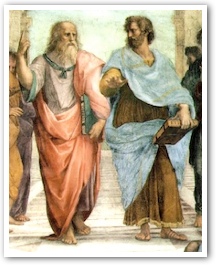Living the examined life
- FATHER GEORGE W. RUTLER
The wistfulness of these autumnal days moves the mind, by the natural withering of leaves and the shortening of days, to think of the end of our own lives.
 |
The brilliant burst of colors in these darkening days is nature's signature that there is something bright about the death of things. The Church designates November for serious thought about the mystery of mortality and eternal life. Without this, we would be like aimless people with vacant eyes wondering who and why we are.
That was the reason classical philosophers strove to examine their thoughts and behavior, believing the maxim that the unexamined life is not worth living. Inscribed in the forecourt of the temple of Apollo at Delphi were the words gnothi seauton: "Know yourself." Even before that, in the temple of Luxor in Egypt, there was written: "Know yourself . . . and you shall know the gods." We could be very basic and literal and take that to mean knowledge about our bodies, and in fact in the sixteenth century the Latin version — Nosce te ipsum — was written on the front of anatomical atlases showing dissected bodies. That is not how the great philosophers meant it, and everyone admits that you can have a detailed knowledge of your bones and brains and kidneys, and still not know who you are. "What am I?" needs to be "Who am I?" — and only God can answer that.
This is why the Book of Revelation (2:17) says: "To the one who is victorious, I will give some of the hidden manna. I will also give him a white stone with a new name written on it, known only to the one who receives it." As with the deepest mysteries revealed by God, there is room in this present world for conjecture. The meaning of that white stone has elicited various theories. Juries in ancient Greece would cast a white stone if they found the defendant innocent. But there was no name on it. Fast forward a little, and the Romans gave tesserae, which were small stones, as a sort of ticket of admission to public events, but they were not necessarily white. Since this passage in Revelation has Christ speaking to the church in Pergamum, it could be a reference to that city's temple of Asclepius, on whose pillars people who had been healed wrote their names, rather as is done now in Lourdes and Fatima. Perhaps the simplest and best explanation is that the Romans of old awarded white stones to winners of the athletic games as tokens for admission to the victory banquet.
All we need to know in these fading days of the year is that the eternal Christ invites us each day of our lives to live as though we were dying, so that in dying we might life forever.
 This is Meaghen Gonzalez, Editor of CERC. I hope you appreciated this piece. We curate these articles especially for believers like you.
This is Meaghen Gonzalez, Editor of CERC. I hope you appreciated this piece. We curate these articles especially for believers like you.
Please show your appreciation by making a $3 donation. CERC is entirely reader supported.

Acknowledgement
Father George William Rutler. "Living an examined life." From the Pastor (November 10, 2013).
Reprinted with permission of Father George W. Rutler.
The Author
 Father George W. Rutler is the pastor of St. Michael's church in New York City. He has written many books, including: The Wit and Wisdom of Father George Rutler, The Stories of Hymns, Hints of Heaven: The Parables of Christ and What They Mean for You, Principalities and Powers: Spiritual Combat 1942-1943, Cloud of Witnesses — Dead People I Knew When They Were Alive, Coincidentally: Unserious Reflections on Trivial Connections, A Crisis of Saints: Essays on People and Principles, Brightest and Best, and Adam Danced: The Cross and the Seven Deadly Sins.
Father George W. Rutler is the pastor of St. Michael's church in New York City. He has written many books, including: The Wit and Wisdom of Father George Rutler, The Stories of Hymns, Hints of Heaven: The Parables of Christ and What They Mean for You, Principalities and Powers: Spiritual Combat 1942-1943, Cloud of Witnesses — Dead People I Knew When They Were Alive, Coincidentally: Unserious Reflections on Trivial Connections, A Crisis of Saints: Essays on People and Principles, Brightest and Best, and Adam Danced: The Cross and the Seven Deadly Sins.




